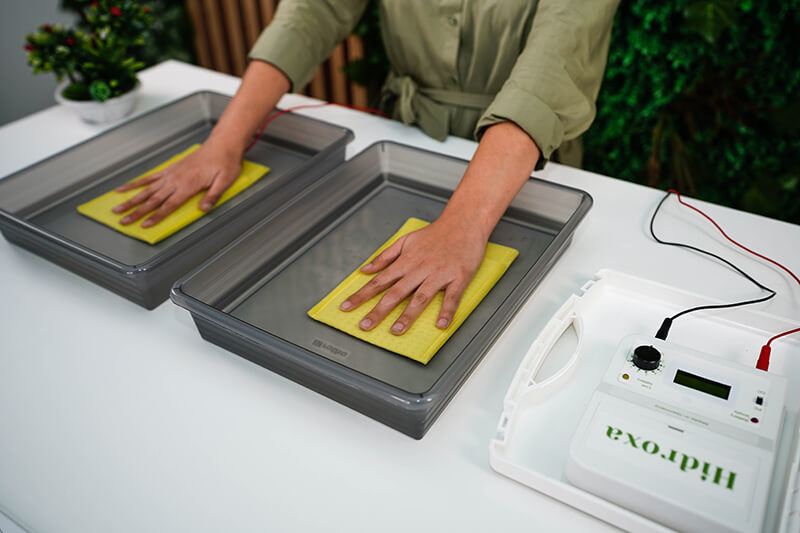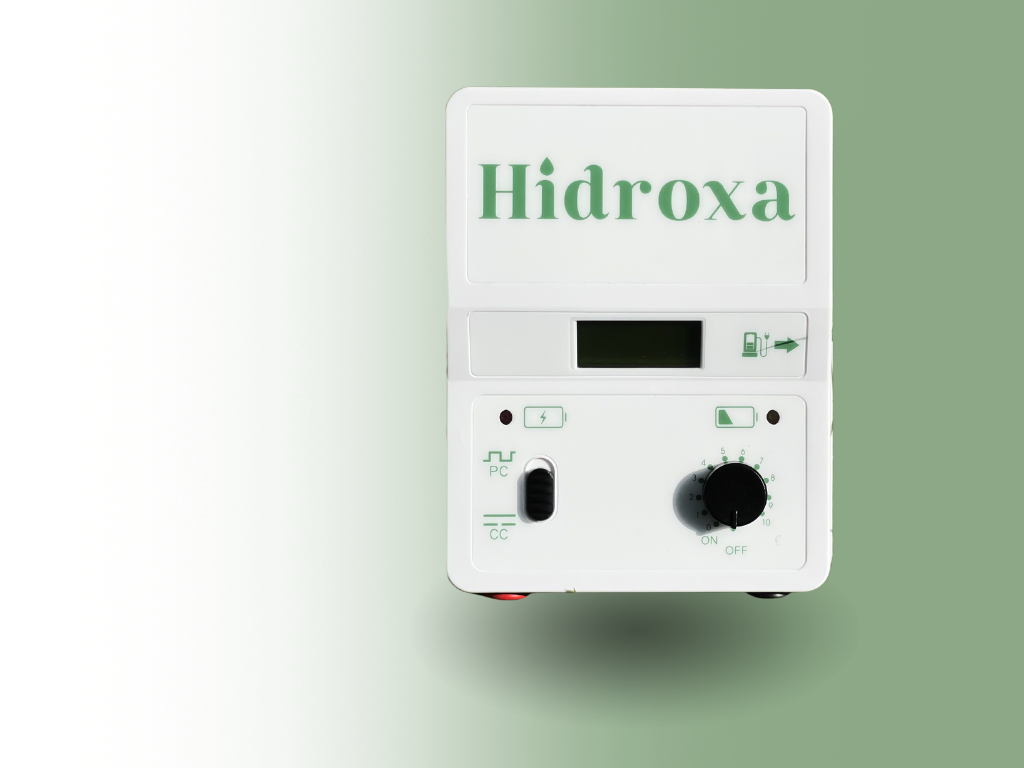Iontophoresis contraindications and precautions: important safety instructions for effective treatment
Iontophoresis is a widely used technique known for its effectiveness in treating various medical conditions. It involves the application of a mild electric current to a specific target area of the body, using a medical device called an iontophoresis device. This procedure is highly beneficial for individuals experiencing excessive sweating, medically known as hyperhidrosis. However, it is crucial to be aware of the contraindications and precautions associated with iontophoresis to ensure its safe and effective use.
Iontophoresis for hyperhidrosis
Hyperhidrosis sufferers often experience discomfort and social anxiety due to excessive sweating. This condition can cause significant discomfort and affect a person's quality of life. With iontophoresis, a mild electric current is applied to the target area, typically the hands, underarms or feet, through the use of treatment electrodes. By applying a mild electrical current through water, the procedure temporarily blocks the sweat glands, significantly reducing sweating.
While iontophoresis is safe for most, certain "Iontophoresis contraindications and precautions" must be considered:
- Pregnancy: Pregnant women should avoid iontophoresis as the effects on the fetus are not well-studied.
- Cardiac Conditions and Pacemakers: Individuals with heart conditions like cardiac arrhythmia, or those who have a pacemaker should not undergo iontophoresis. It is important to disclose any pre-existing medical conditions and consult with a healthcare professional before starting treatment.
- Metal jewellery and Implants: Those with metal jewellery in the treatment area should avoid this procedure or remove the jewellery. Direct contact between metal objects and the current can lead to discomfort or potential injury. The metal can get heated by the electrical current and burn surrounding tissue and internal organs don't always have sensitivity so the person might not feel pain associated with this as a warning. Therefore, just make sure to remove all jewellery, piercings and clothing with metal details before starting treatment. Regarding metal implants they can cause issues if they are located in the way of the current. The current will take the shortest and least resistance path through the body. If you are uncertain please talk to your iontophoresis provider or doctor.
- Skin Conditions: Skin irritation is another potential issue that can occur with iontophoresis. Individuals with sensitive skin, eczema or open wounds in the treatment area may experience discomfort or adverse effects. At the same time hyperhidrosis can cause eczema and getting rid of the hyperhidrosis might be a path to finally curing the eczema as well. Just keep in mind to try to treat the eczema to a calmer state and without wounds before you commend treatment with iontophoresis. It is important to follow the necessary safety instructions provided by the healthcare professional and to monitor the skin for any signs of irritation during and after the treatment.
- Epilepsy: People with epilepsy should consult their doctor before considering iontophoresis.
During an iontophoresis session, it's common to feel a tingling or a faint fizzing sensation beneath the electrodes. If it’s a small part of the skin that itches, you can apply a thick layer of Vaseline on those areas.If these feelings turn painful or too intense you should seize treatment and take a break and/or adjust the settings. As for dry skin, you can apply a moisturizer after each treatment and also several times a day.
One commonly asked question is whether iontophoresis affects the heart. Generally, iontophoresis delivers a very low-level electric current that does not significantly affect the heart. However, individuals with a history of cardiac arrhythmia should exercise caution and consult with a healthcare professional before using iontophoresis.

Procedure and safety precautions
The iontophoresis procedure typically involves immersing the affected areas (like hands or feet) in water through which a gentle current is passed. It's usually done in a clinical setting, although home devices are available. Key precautions include:
- Gradual increase in intensity: Start with a lower current and gradually increase as needed
- Avoiding overuse: Limit sessions to the recommended frequency to avoid skin irritation. Try different treatment schedules to see how seldom you can perform maintenance treatments and still maintain the results. Overtreating can lead to temporary immunity to the treatment
- Monitoring for adverse reactions: Any signs of skin irritation or burns means to stop treatment and wait until the skin has healed before continuing treatments
Benefits of iontophoresis in managing sweating
Iontophoresis offers a host of benefits for individuals struggling with excessive sweating, including:
- Non-Invasive: No needles or surgery are involved
- Minimal Side Effects: When done correctly, side effects are usually minimal
- Effectiveness: Many users experience significant reduction in sweating
- Convenience: With the availability of home devices, treatments can be done at one's convenience
Anti sweat machine
Our Hidroxa SE 20 iontophoresis machine is easy to use and clinically tested for treating excessive sweating of palms, feet, face, and armpits.
Iontophoresis is a scientifically proven method that works for approximately 95% of our customers. You can reach its full effect with 12 treatments.

Making the most of your iontophoresis treatment
To ensure effectiveness, users should:
- Follow the Guidelines: Adhere to the frequency and duration recommended by healthcare professionals
- Consult Regularly with Your Doctor: Regular check-ins can help adjust treatment as needed
Summary
Iontophoresis offers a promising solution for those struggling with excessive sweating. Performing painful treatments is one of the biggest mistakes made by patients because they are so eager to see results. But in the long run that will only slow them down. By taking these precautions, users can enjoy the benefits of this non-invasive treatment, leading to improved quality of life and reduced anxiety related to sweating issues.
Frequently asked questions
While generally safe, iontophoresis can cause skin irritation or discomfort during treatment if not performed correctly or in the presence of contraindications. Iontophoresis can be considered time consuming, especially in the beginning before switching to maintenance schedule.
Each iontophoresis treatment usually takes between 20 to 40 minutes. The duration can slightly vary between individuals.
Iontophoresis should not be painful. Most individuals report only a mild tingling or a slight buzzing sensation during the treatment, which is quite tolerable. It's important to communicate with your healthcare provider if the sensation becomes uncomfortable.
The pros of iontophoresis include its effectiveness in reducing excessive sweating and localized delivery of medication. The cons include potential skin irritation, discomfort, and the need for regular treatment sessions.
The time frame for noticing improvements with iontophoresis can differ among individuals. However, many users observe noticeable results within a few weeks of consistent treatment. It's essential to maintain the treatment schedule for optimal outcomes.
Absolutely, iontophoresis can be performed at home using a device designed for home use. These devices are user-friendly and come with instructions to ensure safe and effective treatment. However, it's advisable to consult with a healthcare professional before starting home treatment to exclude underlying causes of the sweating (secondary hyperhidrosis).
Contact us
For more information or to schedule a consultation about iontophoresis, feel free to contact us. Our team of experts is ready to assist you in your journey towards a sweat-free life.